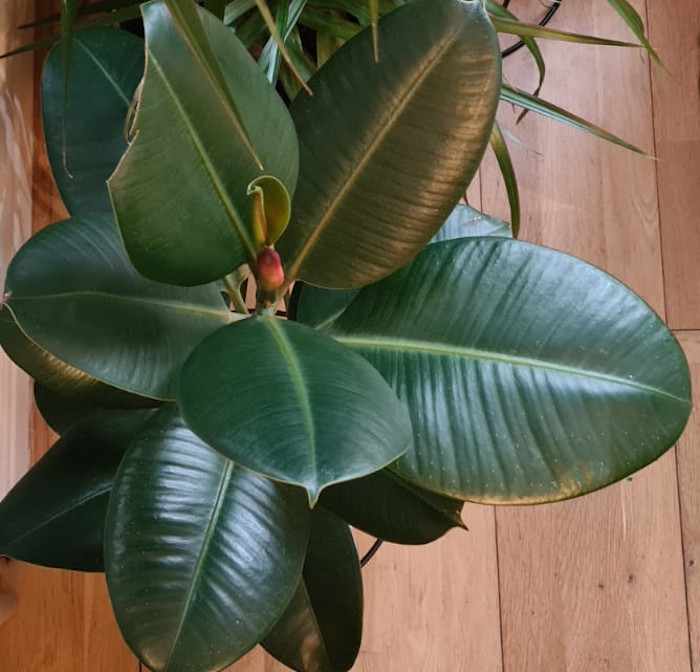
Disclosure: This post may include affiliate links meaning I receive a commission if you make a purchase through these links at no extra cost to yourself. This helps to keep OSERA ad free. Thank you for your support on this platform.
Rubber Plant Leaves Turning Yellow
Rubber plant leaves turning yellow usually have something to do with too much water being taken in by the plant, either through overwatering, improper drainage or heavy soil. Let’s take a look at each of these in turn so we know what is causing rubber plant yellow leaves and what we can do to fix it.
Other signs of overwatering issues include the plant becoming squishy or soft to the touch, drooping leaves, blackening of leaves and stem, and starting to lose leaves. By the time you reach this point your plant could be in serious trouble so it’s a good idea to start diagnosing the issue as soon as you notice rubber plant yellow leaves.
Improper Watering Techniques
The most likely cause of rubber plant leaves turning yellow is overwatering due to improper watering techniques. A rubber plant likes to be watered fairly often and kept in a moist environment, however, it’s important that you allow the soil to dry out partially between waterings. If you have a weekly watering schedule or are doing so more often than this then it’s very likely you’re overwatering your plant.
Don’t allow the soil to dry out completely or go weeks between waterings but instead place your fingers into the soil up to the second knuckle. Once this feels dry then it’s time to water your plant. If you struggle knowing when to water your rubber plant then try using a moisture probe like this one from Amazon. Insert the two metals prongs into the soil and you’ll get a moisture level reading. You can rewater your plant when the metre reads around 2 or 3.
Inadequate Drainage Holes
Just like with most plants, rubber plants really need to be kept in pots with drainage holes. A lack of proper drainage means excess water can become trapped and your roots are just sitting in water unable to dry out. If you want to keep your rubber plant in a beautiful decorative pot with no holes then that’s not an issue, just plant it in a slightly smaller plastic pot with drainage holes and then place this in the larger decorative pots.
This way you get the best of both worlds, the pot you like and a plant that won’t drown. Just make sure you take the plant out of the decorative pot when it’s time to water it.
Incorrect Potting Mix
The potting mix you choose for your rubber plant is just as important as the watering techniques you use are. You will need a well draining mix that allows water to escape. It’s important you don’t use compost or soil meant for outdoor use as this can be too heavy and can trap water for long periods of time. Instead you want to get a potting mix specifically for houseplants, ones for cacti and succulents will also work well as they tend to allow better drainage. Mix your potting mix with perlite to encourage aeration in the soil as this will allow liquids to move through it more quickly, and peat moss to retain water needed to keep your soil moist but not soaked through.
Not Adjusting Your Watering With The Seasons
Another problem that can cause rubber plant yellow leaves is learning how often you need to water your plant when you first get it and then not adjusting your watering schedule with the changing seasons. A rubber plant will need to be watered much more frequently in the summer when it’s warm and the soil dries out quickly compared to the winter when the cool whether and lack of sunlight causes water to stay in the potting mix for much longer.
This is why it’s important you don’t just water your plant at a set time like once a week and instead learn to read the signs of when your rubber plant needs a drink and when it’s fine to go for a few days longer.
Article: Rubber Plant Leaves Turning Yellow
Suggested Article: Rubber Plant Leaves Curling



Leave a Reply